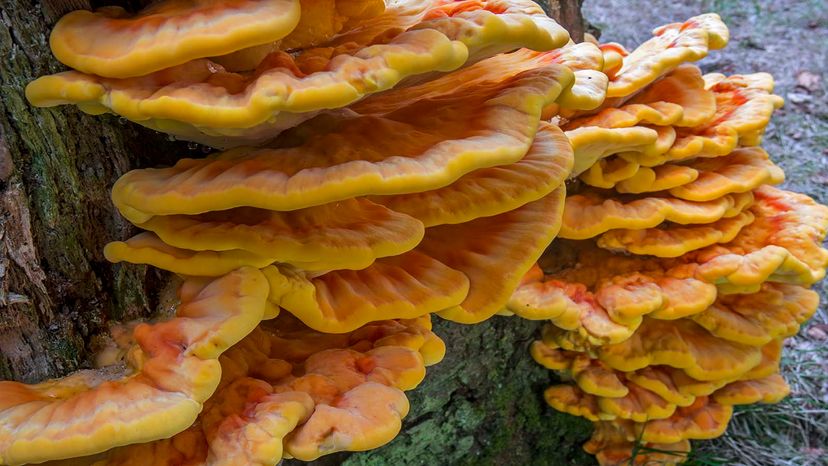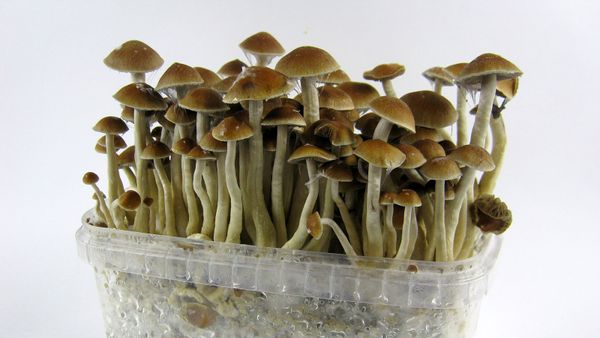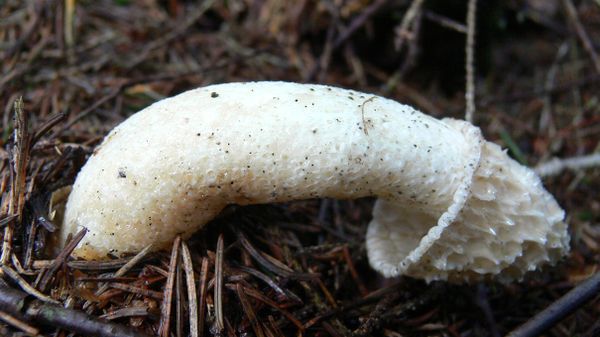Out in the wild, a large cluster of this fascinating fungi looks a bit like a big yellowish-orange cabbage. Chicken of the Woods mushrooms have a bracket-like shape with a wavy curved edge that's typically lighter in color. The mushrooms form in layers, and their underside has its own style too — lacking the characteristic thin lines on the underside of many mushrooms, known as gills, they have tiny, round pores instead.
Their massive size helps make them easier to spot. The brackets can measure 2 to 20 inches (0.05 meters to 0.5 meters) across, and the clusters can weigh up to 100 pounds (45 kilograms).
Chicken of the Woods mushrooms grow in North America, Europe and parts of Asia and feed on trees — dead or living. Oak trees tend to be their preferred choice of grub, but they also make other hardwoods their home.
It is important to note that these popular mushrooms aren't 100 percent innocent. They can cause brown rot on a living tree, a form of damaging decay. And while the makeup of the mushroom itself isn't poisonous, it's necessary to identify the tree they're attached to; when growing on cedar, pine or other conifers they may absorb some of the oils from the tree, which, when eaten, will cause some unpleasant reactions such as swelling of the lips and possible gastrointestinal symptoms. There are even different species of Chicken of the Woods, some of which may also cause those same unpleasant symptoms.



